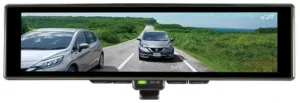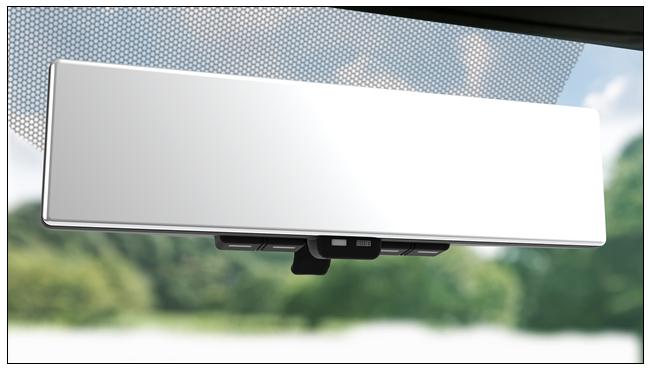Automotive Company, Panasonic Corporation has developed jointly with Nissan Motor Corporation a high-performance electronic mirror for driver safety. It features significant image definition enhancement for better visibility at night and control of a flicker phenomenon caused by the LED lamps of vehicles behind. As Nissan’s fourth generation electronic mirror, this development was adopted for KICKS, new compact SUV released to the Japanese market on June 30, 2020 and to the Thai market after July 2020.
The use of a 2-megapixel camera and a high-resolution display coupled with our unique image processing technology ensures superior image definition and nighttime visibility. A frameless mirror with superior design has also been adopted.
The intelligent rear-view mirror is a system to cover a wide range of a vehicle’s rear-view using its specially-designed camera and to display it in the position of a rear-view mirror.
This development has the following main features:
- Achieving high definition images to reduce the driver’s burden
- Enhancing visibility at night and controlling LED flicker from vehicles behind
- Adopting a frameless mirror with superior design
Leveraging the most-advanced AV technology which is available only from Panasonic for cameras, displays, and other devices and other technologies accumulated through past automotive business, Panasonic will continue to provide drivers with a safe and secure driving environment.
Achieving high definition images to reduce the driver’s burden
- – Adopting a 2-megapixel camera as opposed to the 1.3 megapixels of the conventional model
- – Display of resolution as high as 163 ppi as opposed to the 100 ppi of the conventional model
Enhancing visibility at night and controlling LED flicker from vehicles behind
- – Technology unique to Panasonic made it possible to increase dynamic range to 120 dB (conventional model: 100 dB) for enhanced visibility at night and to control flicker from LED lamps at the same time.
- – Adoption of F2.0 lens further enhances visibility at nighttime (conventional model: F2.8)
Adopting a frameless mirror with superior design
No peripheral rim of the mirror for achieving the whole mirror surface.
Camera is positioned at the rear window. No projection of back passengers reduces blind spots and improves rearward visibility.
A camera fitted inside the rear window reduces blind spots. Unlike conventional inner mirrors, fellow passengers and situations inside the car are not reflected and there is no obstruction of rearward visibility.



